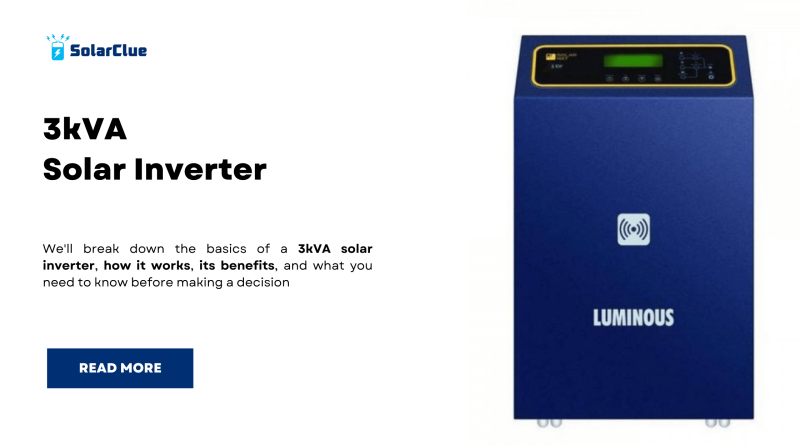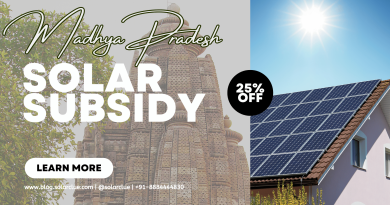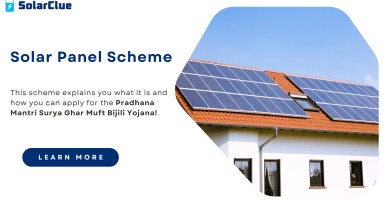3kVA Solar Inverter
If you’re considering solar energy for your home or business, you may have come across the term “3kVA solar inverter.” But what does it mean, and why is it important? In this guide, we’ll break down the basics of a 3kVA solar inverter, how it works, its benefits, and what you need to know before making a decision. Let’s dive in!
Table of Contents
- 1 What is a Solar Inverter?
- 1.1 What Does 3kVA Mean?
- 1.2 A Quick Comparison Table
- 1.3 Step 1: Solar Energy Generation
- 1.4 Step 2: Conversion Process
- 1.5 Step 3: Distribution
- 1.6 Step 4: Monitoring and Control
- 1.7 1. Cost-Effective Solution
- 1.8 2. Energy Independence
- 1.9 3. Environmentally Friendly
- 1.10 4. Low Maintenance
- 1.11 5. Incentives and Rebates
- 1.12 1. Efficiency Ratings
- 1.13 2. Type of Inverter
- 1.14 3. Warranty and Support
- 1.15 4. Compatibility with Solar Panels
- 1.16 Step 1: Site Assessment
- 1.17 Step 2: System Design
- 1.18 Step 3: Installation
- 1.19 Step 4: Testing
- 1.20 Step 5: Monitoring Setup
- 2 FAQs
- 2.1 1. How much power can a 3kVA solar inverter support?
- 2.2 2. Can I use a 3kVA inverter for a small business?
- 2.3 3. What happens if my solar panels produce more power than the inverter can handle?
- 2.4 4. Is it possible to upgrade from a 3kVA inverter later?
- 2.5 5. How long does a 3kVA solar inverter last?
What is a Solar Inverter?
A solar inverter is a crucial component of a solar power system. Its primary job is to convert the direct current (DC) electricity generated by solar panels into alternating current (AC) electricity, which is what most appliances and devices in your home use. In simple terms, without a solar inverter, the electricity produced by your solar panels wouldn’t be usable in your everyday life.
What Does 3kVA Mean?
The term “3kVA” refers to the capacity of the inverter. “kVA” stands for kilovolt-amperes, a unit of measurement for electrical power. In layman’s terms, a 3kVA inverter can handle loads that require up to 3,000 watts of power. This is an important specification as it determines how many appliances and what types of loads your inverter can support.
A Quick Comparison Table
Here’s a simple table to help you visualize the capacity of a 3kVA inverter compared to other inverter sizes:
| Inverter Size | Capacity (kW) | Common Uses |
|---|---|---|
| 1kVA | 1.0 kW | Small appliances, lights |
| 2kVA | 2.0 kW | Medium-sized appliances |
| 3kVA | 3.0 kW | Refrigerators, air conditioners, etc. |
| 5kVA | 5.0 kW | Larger homes, multiple appliances |
| 10kVA | 10.0 kW | Commercial spaces, heavy machinery |
How Does a 3kVA Solar Inverter Work?
Step 1: Solar Energy Generation
When sunlight hits your solar panels, they generate DC electricity. This is the first step in harnessing solar energy. The amount of electricity produced depends on several factors, including the size of the solar panel system, sunlight intensity, and panel efficiency.
Step 2: Conversion Process
Once the solar panels generate electricity, the 3kVA solar inverter kicks in. It takes that DC electricity and converts it into AC electricity. This conversion is essential because most of our home appliances are designed to run on AC power.
Step 3: Distribution
After conversion, the AC electricity is either used directly to power your home or sent to the electrical grid, depending on your setup. If you’re using a grid-tied system, any excess electricity can be sent back to the grid, potentially earning you credits or payments from your utility company.
Step 4: Monitoring and Control
Many modern 3kVA inverters come with monitoring features. This allows you to keep an eye on your solar system’s performance. You can see how much energy you’re producing and using, helping you to manage your energy consumption more effectively.
Benefits of a 3kVA Solar Inverter
1. Cost-Effective Solution
A 3kVA inverter is often a cost-effective choice for small to medium-sized homes. It can provide enough power for essential appliances without the higher costs associated with larger inverters.
2. Energy Independence
By investing in a solar inverter, you’re taking a step toward energy independence. You can produce your own electricity, reducing your reliance on the grid and protecting yourself from rising energy prices.
3. Environmentally Friendly
Solar energy is a clean and renewable source of power. By using a 3kVA solar inverter, you’re helping to reduce your carbon footprint and contribute to a healthier planet.
4. Low Maintenance
Solar inverters require very little maintenance. Most models are designed to last for years and often come with warranties, giving you peace of mind about your investment.
5. Incentives and Rebates
Many governments offer incentives for installing solar energy systems. By choosing a 3kVA inverter, you may qualify for various rebates or tax credits, making your investment even more affordable.
Key Considerations When Choosing a 3kVA Solar Inverter
1. Efficiency Ratings
Look for an inverter with a high efficiency rating. This means it can convert a higher percentage of DC electricity into usable AC electricity. A good efficiency rating is usually above 95%.
2. Type of Inverter
There are different types of inverters available, including string inverters, microinverters, and hybrid inverters. Choose one that best fits your energy needs and installation requirements.
3. Warranty and Support
Check the warranty period offered by the manufacturer. A longer warranty usually indicates a more reliable product. Also, ensure that there is good customer support available in case you need assistance later.
4. Compatibility with Solar Panels
Make sure your inverter is compatible with the solar panels you intend to use. This ensures optimal performance and efficiency of the entire system.
Installation Process
Installing a 3kVA solar inverter is best done by professionals. Here’s a brief overview of what to expect during the installation process:
Step 1: Site Assessment
Before installation, a solar energy expert will assess your site. They will look at your roof, shading issues, and electrical setup to determine the best configuration for your solar system.
Step 2: System Design
After the assessment, they’ll design a system tailored to your energy needs. This includes deciding how many solar panels you’ll need and where to place the inverter.
Step 3: Installation
The actual installation involves mounting the solar panels, connecting them to the inverter, and hooking everything up to your electrical system. This can take a day or two, depending on the complexity of the installation.
Step 4: Testing
Once installed, the system will be tested to ensure everything is working properly. This is a critical step to make sure your solar energy system is functioning as expected.
Step 5: Monitoring Setup
Finally, if your inverter has monitoring features, the technician will help set it up so you can track your energy production and consumption.
Conclusion
Investing in a 3kVA solar inverter is a smart choice for those looking to harness solar energy efficiently. It’s an effective way to reduce electricity bills, minimize your carbon footprint, and become more energy independent. As you navigate your options, consider your energy needs, the efficiency of the inverter, and installation factors. With the right setup, you can enjoy the benefits of solar energy for many years to come.
Visit SolarClue® to see the best Solar Inverters. SolarClue® actively sells solar energy products at discounts of up to 50% on its online marketplace.
FAQs
1. How much power can a 3kVA solar inverter support?
A 3kVA inverter can support appliances that collectively use up to 3,000 watts. This includes items like refrigerators, televisions, lights, and computers.
2. Can I use a 3kVA inverter for a small business?
Yes, a 3kVA inverter can work for small businesses that have moderate energy needs. However, larger businesses may require more capacity.
3. What happens if my solar panels produce more power than the inverter can handle?
If your solar panels generate more power than your inverter can handle, the inverter will limit the output to its maximum capacity. Excess energy may be wasted unless your system is designed to send it back to the grid.
4. Is it possible to upgrade from a 3kVA inverter later?
Yes, many solar systems allow for upgrades. If your energy needs increase, you can replace your inverter with a higher-capacity model.
5. How long does a 3kVA solar inverter last?
Most solar inverters come with warranties ranging from 5 to 10 years, but many can last up to 25 years with proper care and maintenance.



